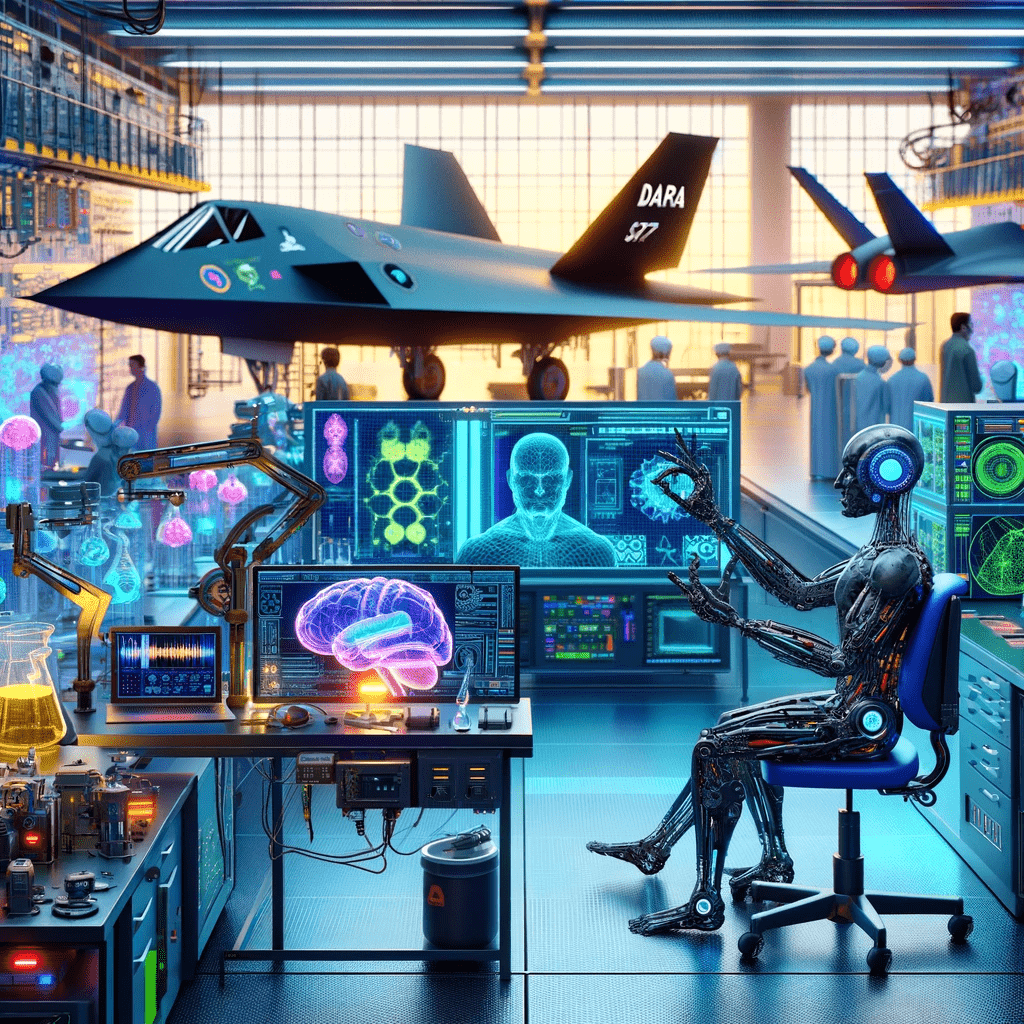Defense Advanced Research Projects Agency (DARPA)

The Defense Advanced Research Projects Agency (DARPA) is a key research and development agency of the United States Department of Defense (DoD), responsible for the development of emerging technologies for use by the military. Established in 1958 in response to the Soviet Union’s launch of Sputnik, DARPA’s primary objective is to maintain the technological superiority of the United States by fostering and financing cutting-edge research and development projects. With a history spanning over six decades, DARPA has played an instrumental role in many groundbreaking innovations that have revolutionized not just military technology, but also civilian life.
DARPA operates under the Office of the Secretary of Defense and is headquartered in Arlington, Virginia. The agency works closely with academic institutions, industry partners, and other government organizations to develop advanced technologies that can serve both military and civilian purposes. One of DARPA’s key strategies is to engage in high-risk, high-reward research, with the understanding that not all projects will succeed but that those which do will have a significant impact.
DARPA has been responsible for several technological breakthroughs that have reshaped the world we live in today. One of the agency’s most notable achievements is the development of the ARPANET, a precursor to the modern internet. ARPANET was developed in the late 1960s and early 1970s as a means to enable communication between research institutions and defense contractors. This innovation laid the foundation for the global information network we know today as the internet (Source: DARPA).
Another groundbreaking project supported by DARPA was the development of the first stealth aircraft, the F-117 Nighthawk. This project aimed to create a combat aircraft with a minimal radar signature, enabling it to evade detection and attack targets with precision. The F-117 Nighthawk was first used in combat during Operation Just Cause in 1989 and played a crucial role in subsequent conflicts, including the Gulf War in 1991 (Source: National Museum of the United States Air Force).
DARPA has also been at the forefront of developing advanced prosthetics for injured soldiers. The agency’s Revolutionizing Prosthetics program, initiated in 2006, sought to create advanced prosthetic limbs that would restore near-natural functionality to amputees. One of the most remarkable achievements of this program is the DEKA Arm System, also known as the “Luke Arm,” which offers unprecedented levels of dexterity and control for users (Source: DARPA).
Vint Cerf, a co-inventor of the TCP/IP protocols that underpin the internet, has praised DARPA’s role in fostering the development of the internet and has called the agency “a national treasure” (Source: Forbes, “Vint Cerf Interview: A Look Back at the ARPANET).
DARPA played a crucial role in the development of the Global Positioning System (GPS). In the early 1960s, the agency developed the Transit satellite system to provide accurate navigation information to the U.S. Navy. The success of Transit led to the development of a more advanced system, culminating in the launch of the first GPS satellite in 1978. GPS is an indispensable technology used in various applications, such as navigation, communication, mapping, and tracking.
DARPA has been a pioneer in the research and development of UAVs, commonly known as drones. These autonomous or remotely controlled aircraft are used for a wide range of military and civilian applications, including surveillance, reconnaissance, and search and rescue operations. One notable DARPA project in this area is the development of the MQ-1 Predator, which was first deployed in the 1990s and has since become an integral part of the U.S. military’s drone fleet.
DARPA has made significant contributions to the field of voice recognition through projects like the Speech Understanding Research (SUR) program in the 1970s. The advancements in speech recognition technology that resulted from DARPA’s research laid the groundwork for today’s voice-activated systems, such as Siri, Google Assistant, and Amazon Alexa.
DARPA has been a driving force in the development of robotics technology. One of its most well-known initiatives is the DARPA Robotics Challenge (DRC), a competition designed to promote the advancement of robotic systems for disaster response. The DRC has spurred the development of several groundbreaking robotic platforms, such as the Boston Dynamics’ Atlas robot, which has demonstrated impressive capabilities in navigating complex environments and performing tasks with a high degree of autonomy.
DARPA has invested heavily in brain-computer interface (BCI) research, aiming to develop technologies that enable direct communication between the human brain and computer systems. Projects like the Brain-Machine Interface (BMI) and Neural Engineering System Design (NESD) programs have led to advancements in areas such as prosthetics controlled by neural signals and the potential for enhanced cognition and sensory perception through direct brain-computer connections.
In “The Imagineers of War: The Untold Story of DARPA, the Pentagon Agency that Changed the World” by Sharon Weinberger, Weinberger gets into the history of DARPA and its role in shaping the United States’ defense and technology landscape. She explores the agency’s successes and failures, as well as the people who have worked to push the boundaries of what is possible in military technology.
The agency has been instrumental in numerous technological breakthroughs that have had far-reaching effects on both military and civilian life. From the development of the internet to advanced prosthetics and stealth aircraft, DARPA’s work has shaped the modern world in many ways.

